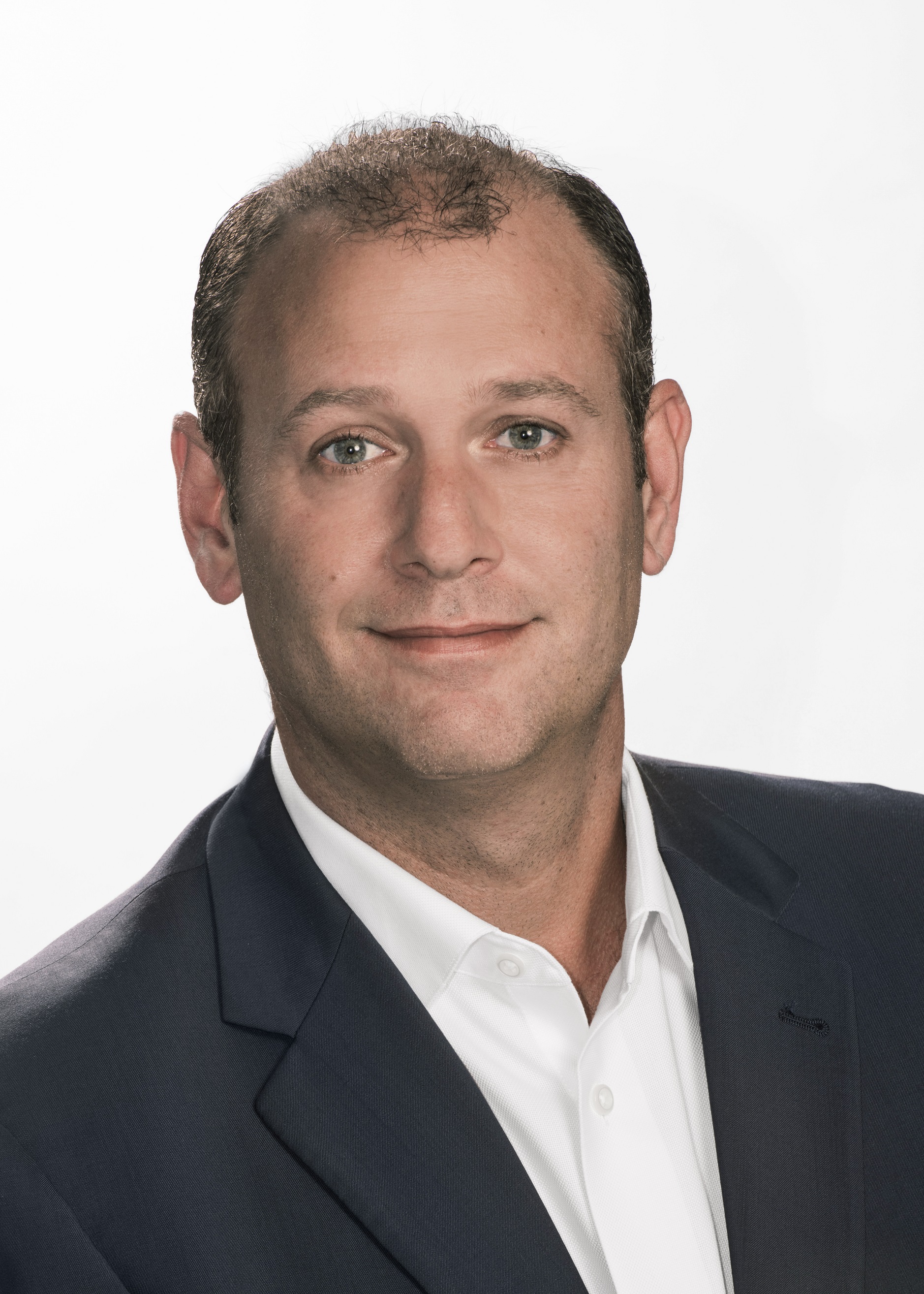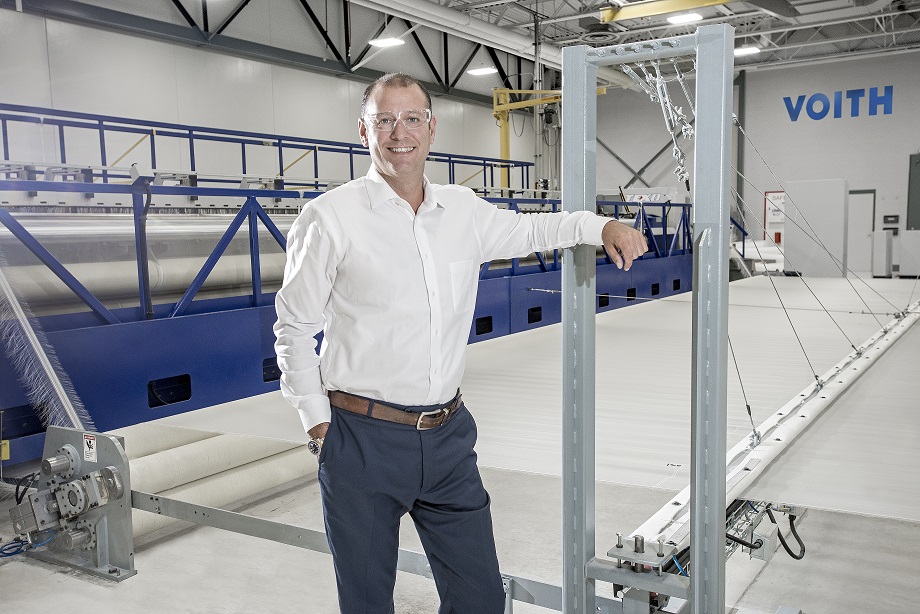
| Archive/Subscribe | TAPPI.org | Advertise | TAPPI Press Catalog | September 2019 |
Tissue Thought Leadership
1. What is Voith doing to stay on top of the latest trends in the North American tissue industry?
The second aspect of the tissue industry in North America is the “away from home” segment. This refers to the business tissue products – for use in offices, airports, public buildings and so on. This segment‘s focus is not on feel, but on the product being economical. There are manufacturers that only operate in this segment and the focus is on low cost. Here we find a much larger use of recycled fibers than in the high-end consumer products, and the products are packaged differently to allow bulk use rather than individual use. Voith keeps up with the rapidly changing consumer tissue market and the away-from-home markets by regularly meeting with our strategic partners which include both branded and unbranded manufacturers. The ability for them to differentiate their products from one another is driving installation of new manufacturing processes and optimization of existing processes and equipment to provide the luxurious feel and improved efficiencies to be cost-competitive in both North American tissue segments.
Voith is well-positioned to supply our customers products to aid in keeping them competitive in the evolving markets. For tissue, Voith aims to boost a plant’s uptime while helping to improve the customer’s final end product. Reducing product defects through seamless fabrics is just one example. We also push for improved wear resistance in all tissue applications. Our products that reduce resource and energy use are also highly sought after. And finally, our service teams are consistently seen as the best at reducing risk in operations and at making process improvements for both quality and efficiency. 2. Where are your customers reporting the most growth in demand for their products? For the consumer tissue segment in North America, the most growth is seen in the premium quality branded and private label grades. Consumers are demanding a softer, more luxurious product. Not exactly what you might expect but, tissue tends to trend with the economy, and the North American market is in a good place right now. In the away-from-home segment, the biggest trend is to utilize more recycled fiber as this is the cheapest source for fiber.
Voith is jointly developing new TAD and specialized forming fabrics with our tissue segment partners to provide the finished product specifications their market research deems critical. Our development work into new pressing fabrics is now heading to market and our continued work on seam quality to allow use of seamed fabrics on all tissue making equipment. The end result of the work in the forming and press sections provides the most uniform sheet on the Yankee with an even moisture profile – which leads to the increased effectiveness of the creping and creation of the bulk and feel desired. Voith, as a full line supplier, has worked to develop manufacturing processes that allow for increased bulk and tensile preservation. Optimized forming sections using our latest fabrics provide a dryer sheet to the press. Our newest pressing configurations and press fabrics provide enhanced dewatering while reducing the nip pressures which maintain sheet strength. Improved controls using the latest Papermaking 4.0 developments allow a more uniform sheet and the ability to make rapid adaptations to changes in raw materials and processes – end result is greater uniformity of product. 3. How is the demand for tissue products changing, and how should the paper industry prepare for these changes? As a result of the rise of the private label products, this has forced the producers to drive to two ends – higher quality products and reduce manufacturing costs. We have already discussed the growth of the premium consumer products and as long as the economy in North America is strong, the market will require the more luxurious feeling products. We will continue to develop new products with our partners to meet their needs in making tissue. One area we see a huge amount of interest and activity in is the converting of the mother rolls of tissue into consumer-sized packaging -- rolls, folded, boxed, and so on. Oftentimes, the converting process drives the manufacturing process, especially if problems in converting requires the paper machines to slow down or shut down with backlog. Variations in moisture, physical defects and marking issues that lead to breaks in the converting equipment increases production costs. These are already lightweight products and they will become even more so in the future. Our focus with our product development is to generate products which reduces these variations and with further developments in manufacturing from our project-based colleagues, we will further open the process window that allows our customers to run as cost effectively as possible. 4. Considering there is a big emphasis on sustainability in the industry, can you tell us how Voith approaches sustainability efforts? Voith is committed to be an environmental leader and promotes sustainability in all our products. Our full-line supplier capabilities allow us to use more types of recycled fibers and still produce a high quality paper. Our products for papermaking are developed to utilize higher percentages of recycled fiber. We have dryer fabrics developed specifically for high recycled content papers as they are contamination-resistant and by the nature of their weave they are also easier to clean, which results in less time for clean-ups. In addition, Voith is the only supplier who has taken a position to offer our customers a program where we will take their used paper machine clothing and, through third-party recyclers, repurpose them -- even if it is not a Voith fabric. This reduces landfill usage and saves our customers considerable cost. Voith also recycles at all of our fabric and roll plants in North America. We work with our suppliers and third-party recyclers to greatly reduce our scrap. Polymers, plastic, metals, paper products and other materials are recycled, and our other waste streams are regularly reviewed to determine if more items can be recycled. 5. What are the current strengths of the tissue industry? Tissue suppliers are generating profits and are in good financial shape. Consolidation has been a part of the paper industry overall for the last decade or more.In North America we have seen more growth than the other global regions. However, some of the largest tissue suppliers are based in North America and they are well suited to supply globally. In tissue, companies are looking closely at their footprints and adjusting their manufacturing capacity accordingly. Older equipment is being idled and new equipment is being placed near population centers for cost -- mostly transportation -- reasons. Also in North America, the product demand is very different than in the other global regions. As mentioned, the market requires the premium tissue products. All other regional suppliers are not set up to manufacture this as the markets do not require anything more than conventional tissue products. So, the North American tissue suppliers have a nice niche to operate in.
Voith can match this growth by becoming the industry’s preferred partner and developing the relationship to work with our customers to satisfy the market needs. We are developing these channels, and our position as a full-line supplier will allow us to succeed. Business models may need to change but, we will be nimble enough to adapt as the market, and our customers, change. |
 One of the biggest changes in the tissue segment is the rise of private label brands for consumer products now being sold in stores and on-line. These are direct competitors to branded products and are lower priced. A number of growing competitors in the market cater to this segment only and produce for some very big retailers and grocery stores. So, with competition comes pressure on manufacturing to lower costs. The private label products are also near equals in tissue quality to the national brands. A second major change in the North American tissue industry is the continued demand for premium tissue products. These are the softest, bulkiest and have the most luxurious feel. The North American market is unique in this consumer demand. As a result, the producers are installing high-end manufacturing equipment and retiring the older, standard manufacturing equipment.
One of the biggest changes in the tissue segment is the rise of private label brands for consumer products now being sold in stores and on-line. These are direct competitors to branded products and are lower priced. A number of growing competitors in the market cater to this segment only and produce for some very big retailers and grocery stores. So, with competition comes pressure on manufacturing to lower costs. The private label products are also near equals in tissue quality to the national brands. A second major change in the North American tissue industry is the continued demand for premium tissue products. These are the softest, bulkiest and have the most luxurious feel. The North American market is unique in this consumer demand. As a result, the producers are installing high-end manufacturing equipment and retiring the older, standard manufacturing equipment.



